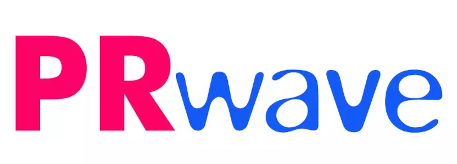What do I mean by that? Well, according to the conventional segmenting method, people in each segment should differ – to some extent – from the people in the other segments. Nevertheless, usually, they do not. Let us say that in a certain segment, there is a majority of women: 60% versus about 50% in the entire population. Even if the difference is statistically significant, is this a ‘feminine segment’ then? And what about the other 40% who are men? Let us assume, for example, that in one of the segments, there is a relatively high percentage of religious people. Is this a ‘religious’ segment? Absolutely not. The vast majority within this segment is clearly not religious, even though their proportion is higher than it is in the general population. Thus, in each and every segment, with slight variations, you could meet almost every layer of society.
The New Market Segmentation
Dr. Dan Herman
If you’re trying to segment your market in the traditional way, what you may be looking for would be groups of consumers sorted out in such a way that a certain likeness exists within each group, and a difference exists between them. The variable determining the meaningful likeness or difference between those groups would be the segmentation variable. A trivial segmentation variable, just for the sake of demonstration, would be hair color. However, after having segmented the customers into groups, it is reasonable to assume that you would expect to do something with it. Let’s say that you have decided to target a certain segment. You would probably want to do some marketing activities that will appeal to this segment, or else, to communicate some kind of enticing message to it. Sometimes, the segmentation variable could suffice for the purpose, (“listen to me, all you red-heads out there…”). In most cases (for instance, the segment of those who consume beer only out side their home), you would have to characterize your segment before you could address them. In other words, you would have to define what describes the customers in that segment, beyond your segmentation variable, and also, what makes them different from consumers in other market segments. The characterization of your segment is a task that is not the same as defining your segment. It is a distinct next step. But now, if you can be truly sincere with yourself, I’m convinced that you have already found out that it does not work.
So where did this idea, on which the conventional segmenting method is based, come from? In the distant past, and in traditional societies (sectarian) the people’s behavioral patterns were pretty much modeled by their affiliation to a certain gender, a nationality/tribe/race, a certain religion, a social/economic status, a profession, and an age group – much more than today, anyway. There were clear clusters of elements pertaining to appearance, general behavior and particularly consumption. Then, back in those days, if you knew one element of a particular cluster, you could quite easily guess the others. But all this has changed. As people are becoming gradually more individualistic, and as possibilities have multiplied, people have become less and less definable as types.
Back in the 70’s we were taught that because of this process, it is worthwhile to conduct psychographic segmentations which includes characterizations according to lifestyle groups. A widely accepted approach such as VALS (Values, Attitudes, and Lifestyles) classified people into 10 ‘lifestyle groups’, later reduced to eight. Disappointingly, it was subsequently discovered that the groupings couldn’t predict, with reasonable credibility or consistency, specific purchase decisions, or preferences in specific product categories. The alternative was to use those groups for purposes of personal-psychological characterization. So, then again, just like in the case of the demographic, and socioeconomic classifications, we find in each and every segment of each segmentation project, ‘representatives’ of all lifestyle types, and, well, we didn’t make much progress here, did we?
If you have been segmenting for many years, you already know that the problem has just been worsening with time. The reason why this is so is that there has been a long lasting consumer trend going on, with numerous implications, because of which we should change the way by which we segment the market.
First of all, let’s face it, our consumer refuses almost completely to abide by segments that create homogeneous groups (heterogeneous from others) according to demographic, socio-economic variables, or even according to lifestyle. Our customer will not behave and consume under our stereotypical forecasts. He is a “collector”, and therefore I call him the ‘eclectic consumer’. He likes the old (Frank Sinatra), as well as the new (fast internet), the comfortable (frozen foods) as well as the effortful (cooking, DIY), the expensive (BMW) as well as the economical (hardware do-it-yourself stores), the international (Giorgio Armani) as well as the locally rooted (folk dancing), the sophisticated (Nokia) as well as the simple (family), the epicure (a double Makiato) as well as the crude (football).
Coaching Executiv – menținerea în spațiul strategic
Coaching de Echipă – ce facem fără un scop clar definit?
Coaching executiv - presiunea rezultatelor versus mindset pentru viitor
Interviu Ioana Mircea, Growth Strategist: Mi-aș fi dorit să înțeleg că antreprenoriatul e un maraton...
PRwave: Viitorul Publicității Digitale în România: Perspectivele profesioniștilor din industriile He...
Decembrie în Timişoara: evenimente de neratat
Bi-interviu despre comunicarea proiectelor culturale
Viitorul Publicității Digitale în România: Perspectivele profesioniștilor din industria e-commerce
Pages: 1 2

